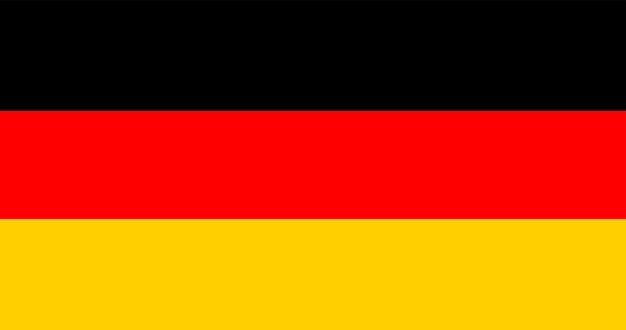First came the internet, then came the mobile phones, and the wonder of technology continues to drop our jaws with the AI development services. Software development and coding are no longer the sole domain of human programmers and designers — generative AI development services in USA services in USA has now officially entered the show, and it’s redefining the playbook. GitHub Copilot, in fact, now produces as much as 46% of developers’ code in all programming languages, demonstrating that AI isn’t simply assisting — it’s co-creating. From transforming napkin sketches into functional apps to automating design workflows with unique precision, generative AI development company are rapidly becoming the Swiss Army knife of the tech world. Whether you’re an experienced developer or just figuring out where to put that semicolon, it’s time to meet your new favorite (non-human) teammate. Let’s unfold with us how gen AI development services are reshaping how we approach software development and design.
The Emergence of Generative AI in Software Development
Generative AI development services is a term that describes algorithms capable of generating new data—text, images, or code—based on what they’ve learned. In software development terms, this means that AI is a tool to write code, create design elements, and even produce entire programs from nothing.
Key Players and Tools
In the absence of developer-focused platforms, it won’t be possible for an AI development company in USA to leverage gen AI to enhance designs and other aspects. Below listed are some of the most significant and helpful tools that you can employ.
1. GitHub Copilot
The tool is developed by GitHub after collaborating with OpenAI and amazingly supports Visual Studio Code, JetBrains, Neovim, and GitHub Codespaces. Copilot is exponentially helpful for developers as it assists in generating code snippets and even all of the functions from natural language inputs. It’s supported in common IDEs such as Visual Studio Code, which makes it reach a wide and large. Whether you’re writing Python, JavaScript, C#, or TypeScript, Copilot can auto-complete logic, fill out repetitive code, and even write test cases.
2. OpenAI Codex
Codex is the Copilot engine and can take in natural language instructions and convert them into code in various programming languages. It reads natural language directions and converts them into syntax, by facilitating code in over a dozen programming languages, such as Python, JavaScript, Go, PHP, Ruby, and even shell scripting. The wonder of Codex doesn’t limit to just coding, it meticulously understands context. It answers technical questions and also translates English descriptions into working code. A product manager can ask Codex to explain a feature like:
“Make a Python function that retrieves weather information from OpenWeatherMap API and returns the temperature in Fahrenheit.”
and returns code that works — no prototyping dev team required.
3. Devin AI
Introduced to the arena of AI development services in March 2024, the existence of Devin AI is owed to Cognition Labs. It is an autonomous software engineer that can write code, debug, and solve problems without seeking any help from you. Devin AI is able to generate websites in minutes and has proven it can correct a high percentage of problems on its own. In contrast to Copilot or Codex, who help developers, Devin can do development tasks on its own — like a full-stack developer who is able to read and comprehend issue that has been raised(such as GitHub Issues), develop apps from scratch (frontend, backend, database), debug and fix issues based on test results and more.
Fun fact: Devin is integrated with a virtual machine where it can execute commands, modify files, look at documentation, and make refinements that are successful through and through. Devin is the first AI that has been able to complete real-world problems from SWE-bench, a real GitHub issue benchmark, and is being widely employed by AI development services in USA.
Developing Development Cycles
The most direct effect of generative AI is the speeding up of development schedules. Below listed are some of the notable impacts that AI development company in USA and beyond can attest to.
1. Time Savings
A lot of AI development services in USA have observed that developers finish projects in 30-50% less time. Thanks to Gen AI, which automatically generates boilerplate code, leaving developers to deal with logic and creativity.
2. Case Study
Earlier, it took about 3 weeks to put in place a prototype, but farewell to the longweeks. Very recently, a fintech firm employed GitHub Copilot to deploy a prototype loan approval system in 6 days, transforming the efficiency and efficacy.
3. Productivity Boost
A brief trial of GitHub Copilot demonstrated that developers finished projects 55.8% faster than non-AI-aided developers.
Improving Design Processes
Generative AI development services are transforming the design process of software development by streamlining and improving different tasks.
1. Computerized UI/UX Mockups
AI software such as Claude, Galileo AI, and RunwayML is now capable of taking simple natural language commands and turning them into formal wireframes, interactive mockups, icons, and even complete design systems. For example, if you give the command such as:
“Design a mobile app homepage for a grocery delivery company with a search input, category grid, and promotion banner.”
It can instantly create a pixel-perfect wireframe within software such as Uizard or Galileo. As per the 2024 UXTools report, AI-generated mockups can save 60% of early-phase design time making it time-efficient and convenient.
2. Quick Prototyping
Through design creation automation, teams can experiment with several ideas in a fraction of the time, iterating on them based on initial user feedback or stakeholder critiques. AI allows employees to rapidly test various visual and interactive paths. Once a preliminary UI is created, designers can immediately test various design alternatives, including options on color palettes, font structures, button locations, and layout options (grid vs. card, simple vs. elaborate).
Let’s hear it straight from the horse’s mouth— A health-tech firm which was based out of Boston, employed AI development services to develop 8 various mobile app dashboards for a clinical trial app within 24 hours and assisted people in choosing the optimal design via a focus group.
3. Architectural Suggestions
Generative AI can propose the best design patterns or architectural designs given project constraints and best practices, preventing teams from making expensive mistakes upfront. Generative AI development services in USA and beyond can now provide layout and architectural advice, that can suggest design patterns such as card layouts for content-dense views, responsive grids depending on target devices, accessibility requirements (contrast ratio, button size, etc.) as well as information hierarchy dependent on eye-scanning behavior. Figma AI or Diagram AI tools will even replicate eye-tracking behavior to indicate to you what users will most likely see.
Enhancing Code Quality and Maintainability
Generative AI not only accelerates development but also improves the quality and maintainability of code, by easy detection of bugs and optimisation of the same, translation and much more.
1. Bug Detection and Optimization
AI systems are able to scan codebases to identify bugs, suggest optimizations, and forecast performance bottlenecks.
2. Refactoring and Translation
AI can refactor legacy code automatically, which can enhance readability or translate it into new languages, such as COBOL to Java, facilitating modernization processes.
3. Real-World Impact
One multinational e-commerce company discovered that code suggestions using AI cut the time taken to write new features in half and lowered repurposing efforts by 50%. The developers also claimed a 15% reduction in efforts because of the automated scripting of mundane tasks.
Streamlining Testing and QA
Testing is an essential stage in software development, and generative AI development services are improving it and making it more effective.
1. Dynamic Test Data Generation
Generative AI models develop varied and realistic synthetic data sets to aid vulnerability and behavior testing.
2. Intelligent Test Optimization
Through the generation of models from requirements, generative AI development company is USA finds optimum and distinct testing paths with highest coverage.
3. Comprehensive Vulnerability Testing
Generative AI is able to provide a large variety of inputs, detecting vulnerabilities that may get overlooked by manual testing.
4. Automated Documentation
Generative AI greatly simplifies the documentation process by automatically creating user and technical guides, change logs, and annotated code comments for developers.
Revolutionizing Team Dynamics and Collaboration
Generative AI is transforming the way development teams work together. Here’s how:
1. Improved Collaboration
AI tools improve the communication process and collaboration within development teams through the automation of mundane tasks, which creates time for developers to have more meaningful conversations around project objectives and strategies.
2. Cross-Functional Integration
Designers, developers, and quality assurance experts can now collaborate more effectively, readily sharing and refining AI-produced prototypes and test cases.
3. Case Study
A study of the effect of GitHub Copilot on open-source projects reported a 6.5% jump in project-level productivity and a 5.5% jump in individual productivity, noting the teamwork advantages of AI tools.
Democratizing Software Development
Generative AI is reducing the entry barriers to software development and opening it up to non-technical stakeholders.
1. Natural Language to Code
Programmers can tell the development AI services what they need in natural language, and the AI gives back structured, working code. For instance, asking “Build a REST API in Node.js with user login and JWT authentication” can produce 80% or more of the backend within minutes.
2. Empowering Non-Developers
Designers, founders, and product managers can now make more direct contributions to the development process, closing the gap between technical and non-technical team members.
Challenges and Considerations
There are two sides to every coin and gen AI development services in USA and elsewhere is no different. While generative AI provides many advantages, it also poses challenges that must be met. Let’s take a quick look at some of them-
1. Job Replacement Issues
Industry executives such as Zoho CEO Sridhar Vembu have cautioned that AI development services in USA and beyond may diminish human software developers’ demand by automating most of their work. This may put a lot of people out of work, at least in the short run, pushing people into vulnerable columns of the employment market.
2. Quality and Trustworthiness
Relying too much on AI comes with risks, including hallucinations by big language models and challenges scaling or debugging code written by AI.
3. Ethical and Security Considerations
With the increased use of AI-generated code, it becomes very important to ensure the security and ethical application of such code. As technology advances, our lives will become easier but every good is often accompanied by some bad. And here the bad factor can be the rising cybersecurity threats.
The Future of Generative AI in Software Development
The use of generative AI within software development is in its nascent phase, but its impact is already significant.
1. AI as a Junior Developer
Google’s head scientist believes that AI will be as skilled as a junior software developer in about a year.
2. Rise of AI Managers
With AI agents doing more tasks that are conventionally performed by humans, future managers might control squads of AI agents instead of directing humans, and thus small teams might become very powerful.
3. On-going Development
With continued research and experimentation, “virtual engineers” will become progressively proficient and could have a substantial impact on the tech sector.
Generative AI development services is not merely a tool, it’s a game-changing force for software development and design. Automating the mundane, improving collaboration, and making coding more accessible to all, it’s redefining the industry in ways never seen before. How we walk this new path will be determined by the opportunities we seize and the challenges we meet head-on to unleash the full potential of generative AI.
FAQs
What is generative AI in software development?
Generative AI development services in software development is the application of AI algorithms to produce code, design components, and other software elements automatically using input data and prompts.
How does generative AI enhance developer productivity?
Generative AI assists AI development company in USA by speeding up development through automation of tedious tasks, providing code snippets, and aiding in debugging, freeing up developers to address more complex and creative parts of software development.
Can non-developers utilize generative AI tools?
Yes, several generative AI products are architected with simple interfaces where non-technical individuals can create code or designs using natural language requests.
What are the shortcomings of applying generative AI development services to software development?
They include the possible displacement of jobs, dependency on codes produced by AI that could be in error or biased, and ethical issues of data protection and security.
What is the future of generative AI in the tech sector?
Generative AI is likely to become a part of increasingly advanced software development workflows, potentially equaling the work of junior developers and revolutionizing









